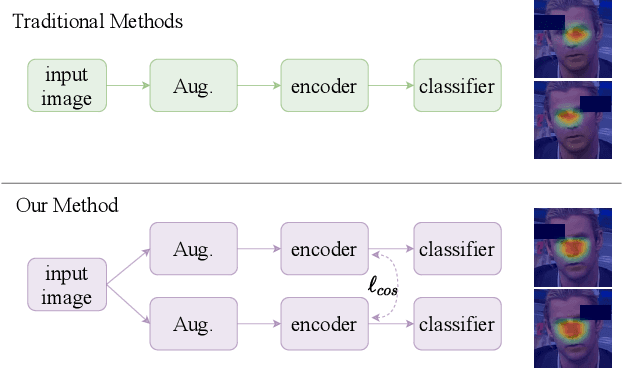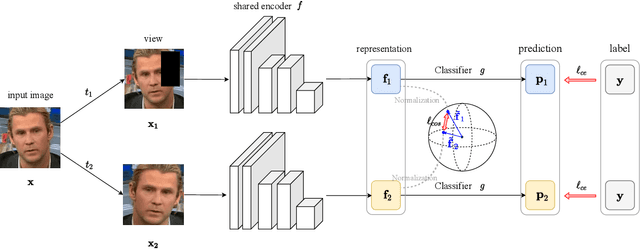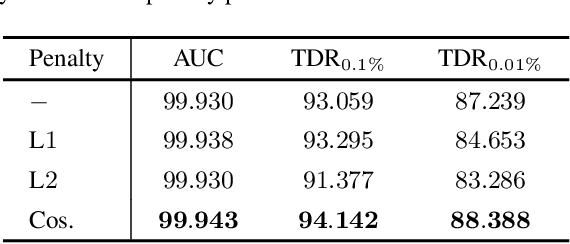Yunsheng Ni
Pangu Ultra MoE: How to Train Your Big MoE on Ascend NPUs
May 07, 2025Abstract:Sparse large language models (LLMs) with Mixture of Experts (MoE) and close to a trillion parameters are dominating the realm of most capable language models. However, the massive model scale poses significant challenges for the underlying software and hardware systems. In this paper, we aim to uncover a recipe to harness such scale on Ascend NPUs. The key goals are better usage of the computing resources under the dynamic sparse model structures and materializing the expected performance gain on the actual hardware. To select model configurations suitable for Ascend NPUs without repeatedly running the expensive experiments, we leverage simulation to compare the trade-off of various model hyperparameters. This study led to Pangu Ultra MoE, a sparse LLM with 718 billion parameters, and we conducted experiments on the model to verify the simulation results. On the system side, we dig into Expert Parallelism to optimize the communication between NPU devices to reduce the synchronization overhead. We also optimize the memory efficiency within the devices to further reduce the parameter and activation management overhead. In the end, we achieve an MFU of 30.0% when training Pangu Ultra MoE, with performance comparable to that of DeepSeek R1, on 6K Ascend NPUs, and demonstrate that the Ascend system is capable of harnessing all the training stages of the state-of-the-art language models. Extensive experiments indicate that our recipe can lead to efficient training of large-scale sparse language models with MoE. We also study the behaviors of such models for future reference.
Pangu Ultra: Pushing the Limits of Dense Large Language Models on Ascend NPUs
Apr 10, 2025Abstract:We present Pangu Ultra, a Large Language Model (LLM) with 135 billion parameters and dense Transformer modules trained on Ascend Neural Processing Units (NPUs). Although the field of LLM has been witnessing unprecedented advances in pushing the scale and capability of LLM in recent years, training such a large-scale model still involves significant optimization and system challenges. To stabilize the training process, we propose depth-scaled sandwich normalization, which effectively eliminates loss spikes during the training process of deep models. We pre-train our model on 13.2 trillion diverse and high-quality tokens and further enhance its reasoning capabilities during post-training. To perform such large-scale training efficiently, we utilize 8,192 Ascend NPUs with a series of system optimizations. Evaluations on multiple diverse benchmarks indicate that Pangu Ultra significantly advances the state-of-the-art capabilities of dense LLMs such as Llama 405B and Mistral Large 2, and even achieves competitive results with DeepSeek-R1, whose sparse model structure contains much more parameters. Our exploration demonstrates that Ascend NPUs are capable of efficiently and effectively training dense models with more than 100 billion parameters. Our model and system will be available for our commercial customers.
EMS-SD: Efficient Multi-sample Speculative Decoding for Accelerating Large Language Models
May 13, 2024Abstract:Speculative decoding emerges as a pivotal technique for enhancing the inference speed of Large Language Models (LLMs). Despite recent research aiming to improve prediction efficiency, multi-sample speculative decoding has been overlooked due to varying numbers of accepted tokens within a batch in the verification phase. Vanilla method adds padding tokens in order to ensure that the number of new tokens remains consistent across samples. However, this increases the computational and memory access overhead, thereby reducing the speedup ratio. We propose a novel method that can resolve the issue of inconsistent tokens accepted by different samples without necessitating an increase in memory or computing overhead. Furthermore, our proposed method can handle the situation where the prediction tokens of different samples are inconsistent without the need to add padding tokens. Sufficient experiments demonstrate the efficacy of our method. Our code is available at https://github.com/niyunsheng/EMS-SD.
Kangaroo: Lossless Self-Speculative Decoding via Double Early Exiting
Apr 29, 2024Abstract:Speculative decoding has demonstrated its effectiveness in accelerating the inference of large language models while maintaining a consistent sampling distribution. However, the conventional approach of training a separate draft model to achieve a satisfactory token acceptance rate can be costly. Drawing inspiration from early exiting, we propose a novel self-speculative decoding framework \emph{Kangaroo}, which uses a fixed shallow sub-network as a self-draft model, with the remaining layers serving as the larger target model. We train a lightweight and efficient adapter module on top of the sub-network to bridge the gap between the sub-network and the full model's representation ability. It is noteworthy that the inference latency of the self-draft model may no longer be negligible compared to the large model, necessitating strategies to increase the token acceptance rate while minimizing the drafting steps of the small model. To address this challenge, we introduce an additional early exiting mechanism for generating draft tokens. Specifically, we halt the small model's subsequent prediction during the drafting phase once the confidence level for the current token falls below a certain threshold. Extensive experiments on the Spec-Bench demonstrate the effectiveness of Kangaroo. Under single-sequence verification, Kangaroo achieves speedups up to $1.68\times$ on Spec-Bench, outperforming Medusa-1 with 88.7\% fewer additional parameters (67M compared to 591M). The code for Kangaroo is available at https://github.com/Equationliu/Kangaroo.
Rethinking Optimization and Architecture for Tiny Language Models
Feb 06, 2024Abstract:The power of large language models (LLMs) has been demonstrated through numerous data and computing resources. However, the application of language models on mobile devices is facing huge challenge on the computation and memory costs, that is, tiny language models with high performance are urgently required. Limited by the highly complex training process, there are many details for optimizing language models that are seldom studied carefully. In this study, based on a tiny language model with 1B parameters, we carefully design a series of empirical study to analyze the effect of each component. Three perspectives are mainly discussed, \ie, neural architecture, parameter initialization, and optimization strategy. Several design formulas are empirically proved especially effective for tiny language models, including tokenizer compression, architecture tweaking, parameter inheritance and multiple-round training. Then we train PanGu-$\pi$-1B Pro and PanGu-$\pi$-1.5B Pro on 1.6T multilingual corpora, following the established formulas. Experimental results demonstrate the improved optimization and architecture yield a notable average improvement of 8.87 on benchmark evaluation sets for PanGu-$\pi$-1B Pro. Besides, PanGu-$\pi$-1.5B Pro surpasses a range of SOTA models with larger model sizes, validating its superior performance. The code is available at https://github.com/YuchuanTian/RethinkTinyLM.
CORE: Consistent Representation Learning for Face Forgery Detection
Jun 06, 2022



Abstract:Face manipulation techniques develop rapidly and arouse widespread public concerns. Despite that vanilla convolutional neural networks achieve acceptable performance, they suffer from the overfitting issue. To relieve this issue, there is a trend to introduce some erasing-based augmentations. We find that these methods indeed attempt to implicitly induce more consistent representations for different augmentations via assigning the same label for different augmented images. However, due to the lack of explicit regularization, the consistency between different representations is less satisfactory. Therefore, we constrain the consistency of different representations explicitly and propose a simple yet effective framework, COnsistent REpresentation Learning (CORE). Specifically, we first capture the different representations with different augmentations, then regularize the cosine distance of the representations to enhance the consistency. Extensive experiments (in-dataset and cross-dataset) demonstrate that CORE performs favorably against state-of-the-art face forgery detection methods.
 Add to Chrome
Add to Chrome Add to Firefox
Add to Firefox Add to Edge
Add to Edge